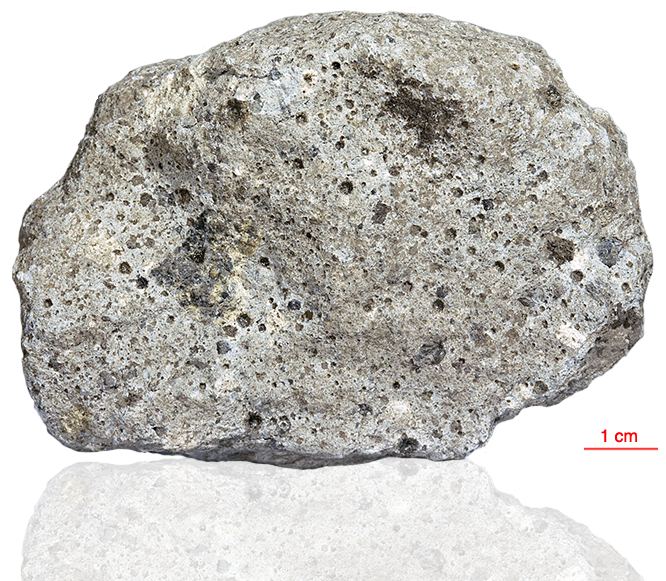
Fact sheet
66075 is one of many coherent, light matrix breccias from Apollo 16 and has about equal amounts of both dark and light aphanitic clasts. The groundmass is coherent, porous (20%), unsorted and seriate and made of angular fragments of plagioclase and other minerals along with lithic and glass fragments. Plagioclase and devitrified maskelynite constitute the majority of the groundmass, followed in abundance by aphanitic material and glass. At least some of the glass is agglutinate. It is a highland regolith breccia. Clasts include anorthosite, gabbroic anorthosite, noritic anorthosite, basalt and troctolite.
The sample weighed 347 grams before analysis. Clasts have been dated at 3.83 to 4.08 billion years (Ar/Ar).
Further details of this and other Apollo samples are here: http://curator.jsc.nasa.gov/lunar/
The Apollo 16 landing site was in the hilly region around Descartes crater in the lunar highlands. The landing spot was chosen to allow the astronauts to gather geologically older lunar material (Descartes Formation and the Cayley Formation) than the samples obtained in the first four landings, which were in or near lunar maria.
The mission lasted 11.1 days, with a stay on the lunar surface of 71 hours. The crew were on the lunar surface for 20.2 hours during which they traversed approximately 27 kilometers and collected approximately 96 kilograms of samples.
Apollo 16 was launched on 16 April 1972.






